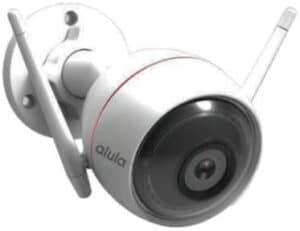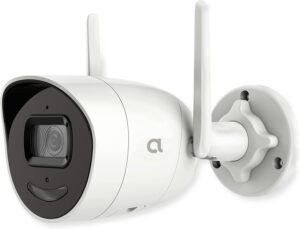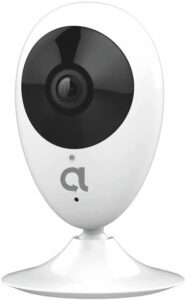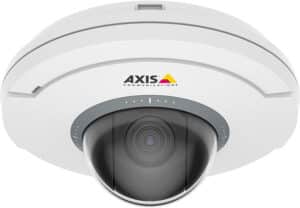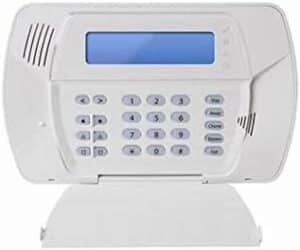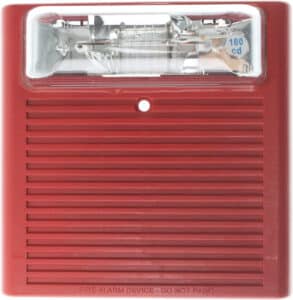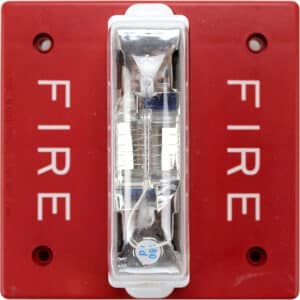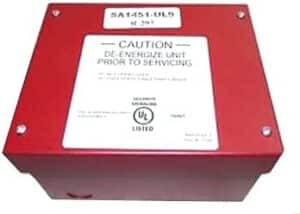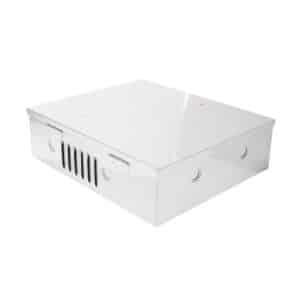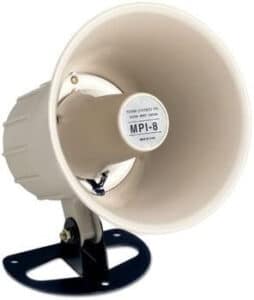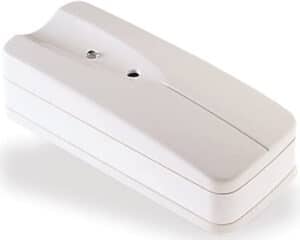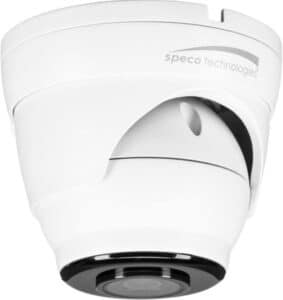How Z-Wave Home Security Automation Can Make Your Home Safer
In today’s world, home security is of utmost importance, and technology has made it easier than ever to keep your home secure. One such technology is Z-Wave home security automation, which uses Z-Wave devices to create a secure and smart home environment. In this article, we will discuss what Z-Wave home security automation is, how it works, and how it can make your home safer.
Table of Contents
What is Z-Wave Home Security Automation?
Z-Wave home security automation is a technology that uses Z-Wave devices to create a secure and smart home environment. Z-Wave is a wireless technology that allows you to control Z-Wave devices using a Z-Wave hub. The Z-Wave technology is designed to provide a reliable and secure connection between devices, and it operates on a different frequency than Wi-Fi, making it less prone to interference.
How Z-Wave Technology Home Security Automation Works
Z-Wave home security automation works by using a Z-Wave hub to connect Z-Wave devices to your smart home network. You can control Z-Wave devices using an app on your smartphone or a smart speaker like Amazon Alexa or Google Assistant. Z-Wave devices come in various device types, including lights, temperature sensors, window sensors, and more. (check here for the best door sensors for added home security)
The Z-Wave hub acts as a central control point for all connected devices, and it allows you to automate various actions, such as having the lights turn on automatically when you open the front door. You can also create schedules for your devices, so they turn on and off at specific times of the day. This makes it easy to simulate occupancy when you’re away from home, making your home less attractive to burglars.
Benefits of Z-Wave Home Security Automation
There are many benefits to using Z-Wave home security automation to make your home safer. Some of the key benefits include:
-
-
Enhanced security: Z-Wave security devices, such as window sensors and door locks, can help you detect and prevent unauthorized access to your home.
-
-
-
Increased convenience: Z-Wave smart devices, such as smart lights and temperature sensors, can help you automate various tasks around your home, making your life easier and more comfortable.
-
-
-
Lower energy bills: Z-Wave smart devices can help you reduce your energy bills by automatically adjusting your thermostat and turning off lights when you’re not home.
-
-
-
Easy to use: Z-Wave home security automation is easy to set up and use, and you can control everything using an app on your smartphone.
-
What is A Z-Wave Plus
Z-Wave Plus is an upgraded version of the Z-Wave technology that provides even more features and benefits. Z-Wave Plus devices have longer battery life, faster communication speed, and better range than standard Z-Wave devices. They also use less power, which means they are more energy-efficient.
Z-Wave Plus devices are backward compatible with standard Z-Wave devices, so you can use them together in your smart home system. However, if you want to take full advantage of the benefits of Z-Wave Plus, you’ll need to use a Z-Wave Plus hub.
Different Z-Wave Devices and Home Security Automation
There are many examples of how you can use Z-Wave home security automation. Here are a few examples:
-
-
Window sensors: Z-Wave window sensors can detect when a window is opened or closed, and they can send an alert to your smartphone if someone tries to open a window while you’re away.
-
-
-
Smart lights: Z-Wave smart lights can be programmed to turn on and off at specific times of the day or when motion is detected. This can help deter burglars and make your home look occupied when you’re not home.
-
-
-
Temperature sensors: Z-Wave temperature sensors can be used to monitor the temperature in your home and adjust your thermostat automatically to save energy.
-
-
-
Door locks: Z-Wave door locks can be remotely controlled, allowing you to lock and unlock your doors from anywhere using your smartphone. This can be helpful if you forget to lock your door before leaving home or if you need to let someone in while you’re away.
-
-
-
LED strips: A Z-Wave LED strip can be used to create ambient lighting in your home and can be controlled remotely using your smartphone or smart speaker.
-
-
-
Security system: Z-Wave security systems can be used to monitor your home for intruders and send alerts to your smartphone if an alarm is triggered. You can also program your security system to turn on your smart lights and lock your doors in the event of an emergency.
-
These are just a few examples of the many ways you can use Z-Wave technology to make your home smarter and more secure. With the right combination of devices, you can create a fully connected home that can be controlled from anywhere.
How Z-Wave Home Security Automation Can Make Your Home Safer?
In today’s world, ensuring the safety of our homes has become a top priority, with many seeking innovative and comprehensive solutions to protect their property and loved ones. One such solution that has emerged as a game-changer in enhancing home security is the Z-Wave home security automation.
By integrating smart home devices, utilizing the Z-Wave frequency, and connecting them through a smart hub, homeowners can now experience unparalleled safety and convenience in managing their security needs. Z-Wave home security automation is a revolutionary technology that uses low-power radio waves to facilitate communication between smart home devices.
Operating on the Z-Wave frequency, these devices create a robust and reliable mesh network that allows them to interact seamlessly and exchange information. This unique communication system ensures that any potential interference or signal drop is minimized, providing a stable and secure network for all connected devices.
This makes Z-Wave an ideal choice for homeowners looking to implement a dependable and efficient home security system. One of the most significant advantages of Z-Wave home security automation lies in its compatibility with a wide range of smart home devices. From surveillance cameras and motion sensors to smart locks and lighting systems, Z-Wave technology can be integrated into numerous devices, offering homeowners a highly customizable and scalable security solution.
This adaptability ensures that the system can grow and evolve according to the homeowner’s needs, providing a long-term solution that can adapt to changing requirements and technology advancements. Central to the effectiveness of a Z-Wave home security system is the smart hub. Acting as the heart of the system, the smart hub connects and controls all the interconnected devices, allowing homeowners to monitor and manage their security measures from a single, centralized location.
With the smart hub, users can receive real-time alerts and notifications, access live video feeds, and even remotely manage devices such as smart locks and lighting systems. This level of control and convenience not only enhances the overall security of the home but also provides homeowners with peace of mind, knowing that their property is well-protected even when they are away.
Conclusion
So, we’ve learned about the many ways that Z-Wave Home Security Automation can make your home more secure. It can be used to detect intruders and alert you to potential danger, as well as to control lighting, locks, and other connected devices. With the right system in place, you can ensure that your home is safe and secure.
At Xcessory Zone, we specialize in providing DIY home security products that are easy to install and use. Our products are built with the latest technology and come with a satisfaction guarantee. We’re committed to helping you protect your home and your family.
Don’t wait another minute to start making your home safer. Shop Xcessory Zone today and find the perfect Z-Wave Home Security Automation system for your needs. With our products, you can have peace of mind knowing that your home and your family are safe and secure.
FAQs
How is home automation system implemented using Z-Wave?
Implementing a home automation system using Z-Wave is a simple process. Once you have all the necessary compatible devices and Z-Wave hubs, you can begin connecting them to the Z-Wave network. For example, you can use a window sensor, temperature sensor, and other devices to create a network of connected devices.
Once the devices are connected, you can create automated rules that can be triggered by pre-defined conditions. For example, you can set the temperature sensor to trigger the air conditioner when the temperature reaches a certain level. In this way, you can create a home automation system that is tailored to your specific needs.
Which is better for HomeKit Zigbee or Z-Wave?
When it comes to smart home products, choosing between Zigbee and Z-Wave can be a difficult decision. Both technologies have their advantages and drawbacks, and it really depends on what you need for your home. Zigbee is generally better for larger homes, as it can communicate with more devices. It is also a great choice for alarms, smoke detectors, and other home security products.
On the other hand, Z-Wave is more popular in the market and is better suited for smaller homes. It is also more reliable for communicating with multiple devices at once. Ultimately, the best choice between Zigbee and Z-Wave will depend on your home’s specific needs.
What are the 3 common uses of home automation?
Home automation is becoming increasingly popular as people look for ways to make their lives easier and their homes more secure. There are three common uses of home automation: arming and disarming home security systems, controlling lights and other appliances, and automating routine tasks.
Home security systems are often the first step in home automation. Smart home security systems allow homeowners to arm and disarm their home security systems from anywhere using their mobile devices. Many brands offer customizable, automated arming and disarming schedules, which can help homeowners save energy and money.
Another common use of home automation is controlling lights and other appliances. Smart lighting systems often include motion sensors, and some can be integrated with voice-enabled smart speakers. This makes it easy for homeowners to control their lights and other appliances with their voices.
Finally, home automation can help automate routine tasks such as watering plants, adjusting thermostats, and closing curtains. This can help homeowners save time and energy, and can even increase the security of their homes by making sure lights are turned off, curtains are closed, and doors are locked.
In conclusion, the three common uses of home automation are arming and disarming home security systems, controlling lights and other appliances, and automating routine tasks. Home automation can help make life easier, save energy and money, and increase the security of your home.
Meet Our Partners!




